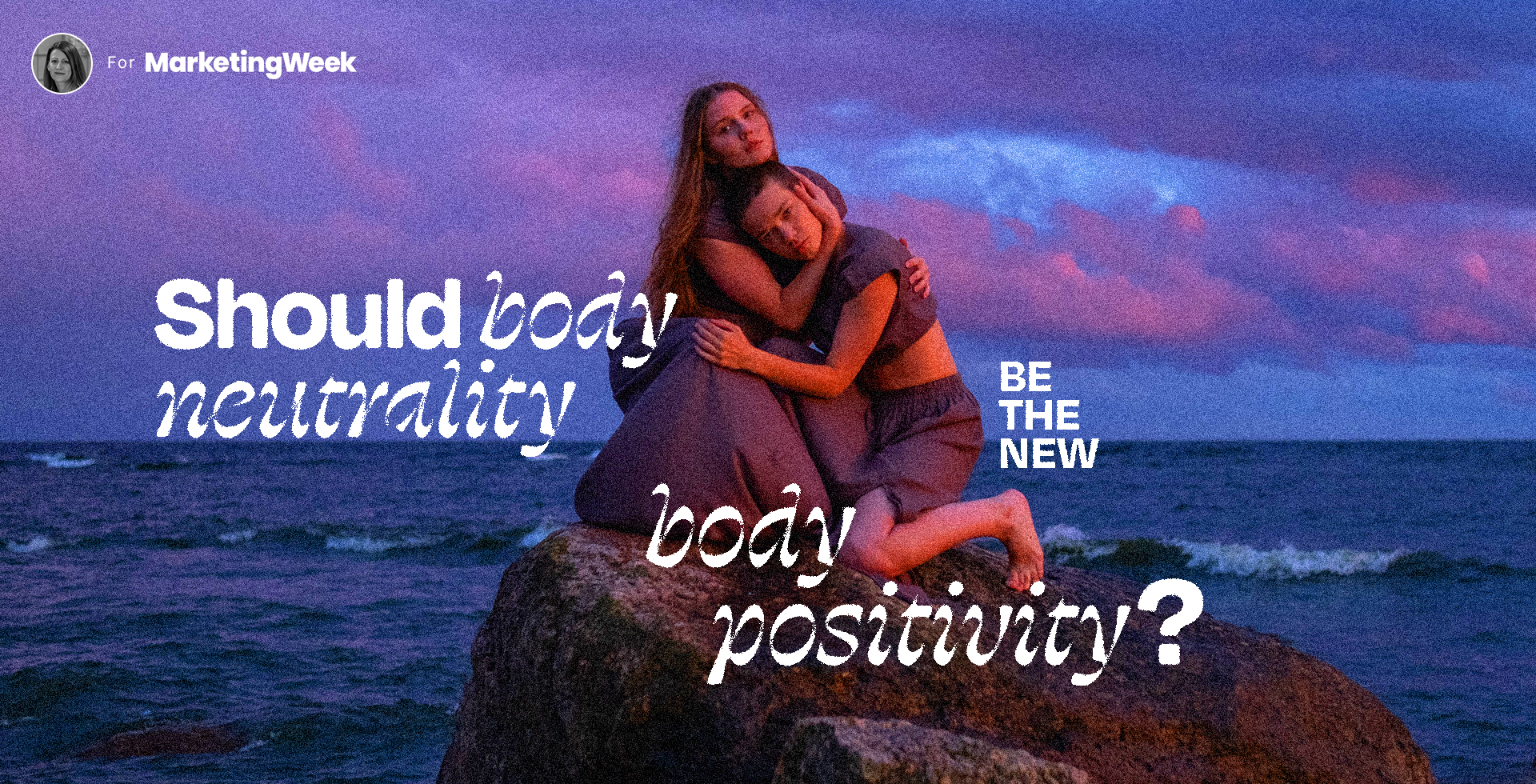
This month Unstereotype Alliance, the UN body convened to end harmful stereotypes in advertising, partnered with Getty Images to create a 12 m-long mural depicting evolving standards of beauty and feminine ideals in advertising over the decades. Looking at it, while there’s little doubt that size diversity and representation have improved significantly, particularly in the last two years, you can’t help noticing that whether it’s the nipped-in waist of the 50s, the hard abs ideal of the 90s, or the more recent Kardashianesque curves, women’s body types, like clothing trends, are fashions that seem to come and go with the changing times.

Certainly, brands’ recent commitments to body positivity have helped move the needle, broadening the notion of what is considered beautiful in recent years. We see more diversity on our runways than ever before, our ads are more representative of real women than at any other time in history, and social media influencers are encouraging young girls to love their bodies.
And yet, as the 2000s make a comeback, and the Y2K aesthetic with its low waistlines and tiny cropped tops is once again chic, slowly but surely, we’re also seeing a resurgence of thinness as ideal. Look up #MyNameisBellaHadid on TikTok or the recent New York Post article that almost joyfully proclaimed ‘Bye-bye Booty: Heroin Chic is Back’ and it’s all there.
The past never really left us
Despite the recent body positivity movement, it seems something is still fundamentally wrong. The reality is that eating disorders among girls and women are up since the year 2000, and newly acceptable iterations of thinness (“slim thick” and “fit and strong”) seem to be everywhere. Add the power of social media filters and algorithms serving up potentially damaging content, and you have a potent combination of harmful influences on a scale never before seen.
The problem is that despite a lot of great work in the body positivity space to date, we’re still essentially focusing on women’s bodies, even if it’s in today’s broader context of what is considered beautiful. As Anushka Rees, author of Beyond Beautiful, puts it, ‘As a society, we’re so looks-obsessed that we can’t even fathom the idea that someone could be perfectly happy without thinking they are beautiful. That’s why we tell people ‘Your flaws are beauty’ when really what we mean is, ‘Your flaws are irrelevant”.

It’s a thought that stops you in your tracks, particularly if you’re a woman. But how does it relate to the idea of body positivity? Enter: body neutrality – promoting the amazing things our bodies can do and feel but divorcing that from any evaluation of our physical appearance. Think of it as body positivity without the beauty bit. Should and could brand marketers working hard on body-based fempowerment platforms today look beyond, to body neutrality?
Neutralising negativity
For one, doing so may lessen criticism from some quarters that brands have manipulated the body positivity movement to ultimately gain market share. Michelle McEttrick, chief customer officer at Primark hints at the way forward when she says, “Do I feel brands have a role to play in helping women to feel happy in their current bodies? Not really. I think brands need to stop helping women to feel bad in their current bodies. (They need to) stop taking the long way round of seeding a feeling of inferiority in order to sell solutions, and start creating products and services that really add value to your customers’ lives.”
Focusing on body neutrality could also help address one of the biggest criticisms of the modern-day body positivity movement, “telling people to ‘love yourself’ can be as toxic as telling someone how to look,” says Sinead Donohoe, Head of Marketing at fashion brand Simply Be. “Ultimately, many factors impact women feeling ‘happy’ in their bodies – it’s a big ask for brands alone to create that feeling. But normalising different bodies is a good place for brands like mine to start.”

Sportswear brand ASICS, whose name is an acronym for the Latin Anima Sana in Corpore Sano, or a Sound Mind in a Sound Body, took what could be called a body-neutral approach in their recent ‘Dramatic Transformation’ campaign, focusing squarely on the positive mental impact of exercise, versus how it can change how we look. Gary Raucher, EVP of marketing and product at ASICS EMEA, said of the work, “It’s about the transformative power of exercise on the mind and challenging society’s focus on exercising purely for aesthetic transformation. Our research showed the damaging impact of “before and after” photos and we wanted to do something about it. The response has been astonishing: the idea of exercising for mental gain has struck a chord with so many people.”
A path to a better place?
This all got me thinking about what a body-neutral approach might look like for enlightened marketers. If body neutrality is all about forgetting ideals, letting go of so-called flaws and just being, is our industry willing and able to redefine ‘aspirational’? Is there more that brands could be doing to play back the transformative emotional power of fashion, for example, versus effectively fetishising the body beneath the clothes? Have we become so obsessed with the idea of loudly celebrating all bodies that we’ve lost sight of the quiet power and purposeful potential of simply normalising different body shapes and leaving it at that?

I guess this brings me to the realisation that this is a journey that society – and brands – are on. If, as I do, we believe the end game is body neutrality, where the value culture places on beauty and form is fundamentally changed for the better, then we probably first have to move through a period of adjustment where we challenge society’s definition of beauty. And the value of the role marketers can play in that process can’t be understated, as the Unstereotype Alliance/Getty mural evidences. But the biggest challenge still lies ahead, to set aside our obsession with bodily form and beauty and the inherent connection of the two to our identities as people. That’s a huge, audacious goal, tied as it is to a complex history over millennia. It’s also, of course, something that’s well beyond our industry’s remit alone.
That said, we undoubtedly help shape trends – and women’s bodies cannot continue to be a place where trends are allowed to play out.
‘Bye-bye Booty: Heroin Chic is Back’?
Screw that.




